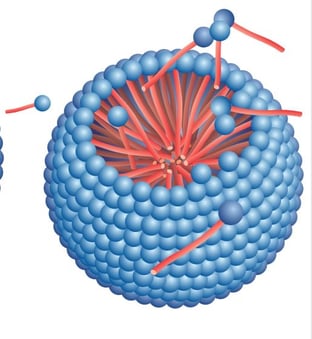Copyright © 2023 RheoSense, Inc.. All rights reserved. Terms and Conditions & Online Privacy
Amphiphilic molecules, which contain both hydrophilic and hydrophobic domains, can self-assemble in aqueous solutions. One of the most common structures formed is the spherical micelle where the hydrophobic groups reside in the core to be shielded from exposure to water. A variety of common molecules form spherical micelles including surfactants, multi-block polymers, and certain types of proteins. Since viscosity is a sensitive indicator of the fluid microstructure, it is a useful tool to characterize various aspects of micelle formation.
In this webinar, we discuss the use of our fully automated VROC® initium one plus viscometer to characterize the self-assembly of both surfactant and milk protein formulations. Our focus is the benefits of concentration dependent viscosity measurements and the information that can be extracted. For the surfactant solutions, viscosity is presented as an alternative method to surface tension for identification of the critical micelle concentration or CMC. A full intrinsic viscosity or dilute concentration series analysis of sodium caseinate is also reviewed, illustrating how the intrinsic viscosity parameter can be combined with the protein molecular weight to estimate the hydrodynamic radius and volume fraction of the sodium caseinate micelles.
Fill out the short form to the right to download the FREE recording!

Copyright © 2023 RheoSense, Inc.. All rights reserved. Terms and Conditions & Online Privacy